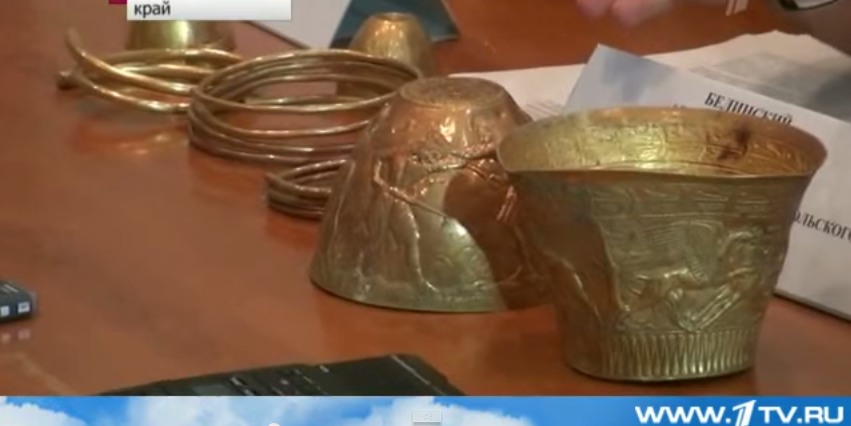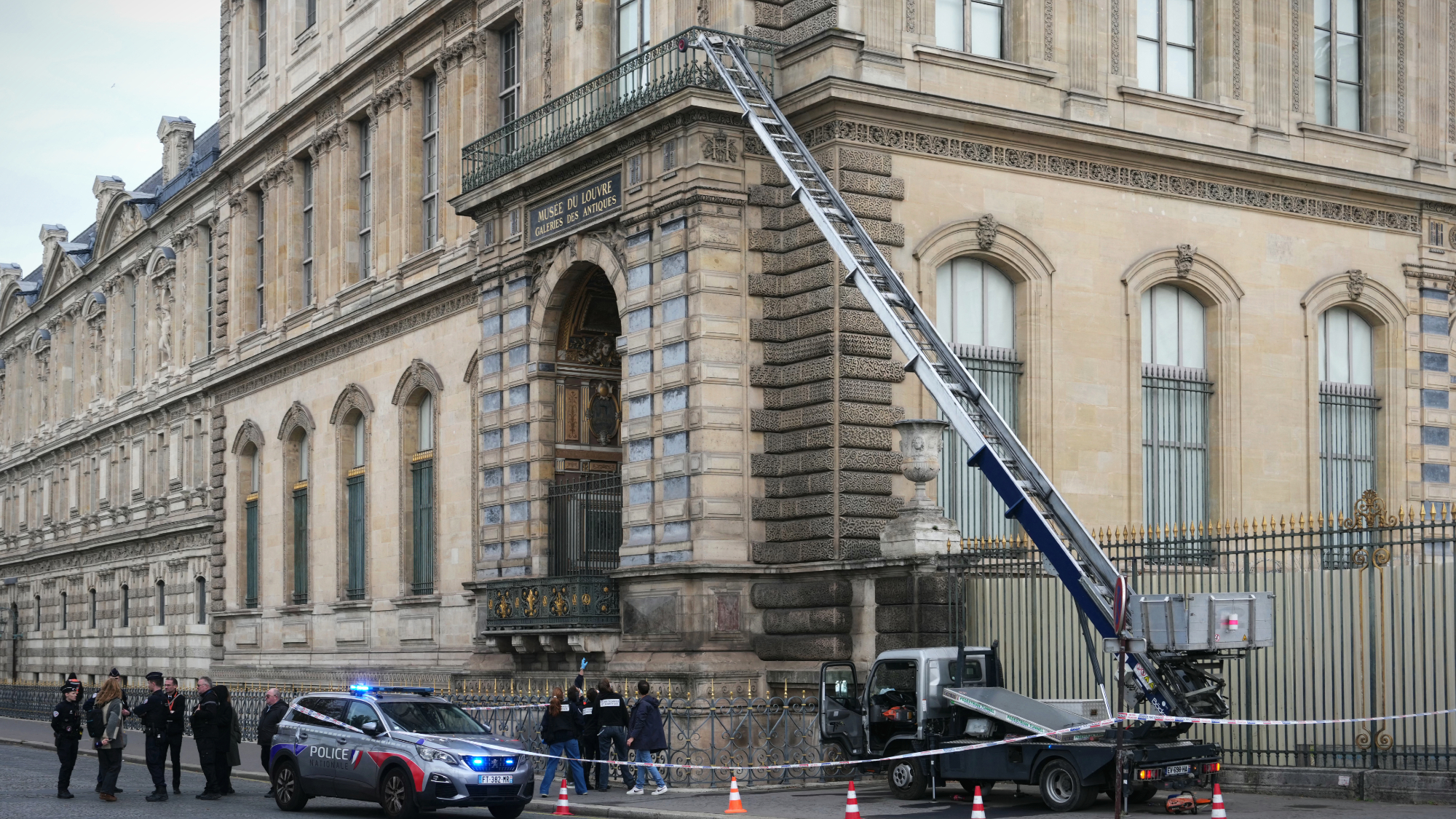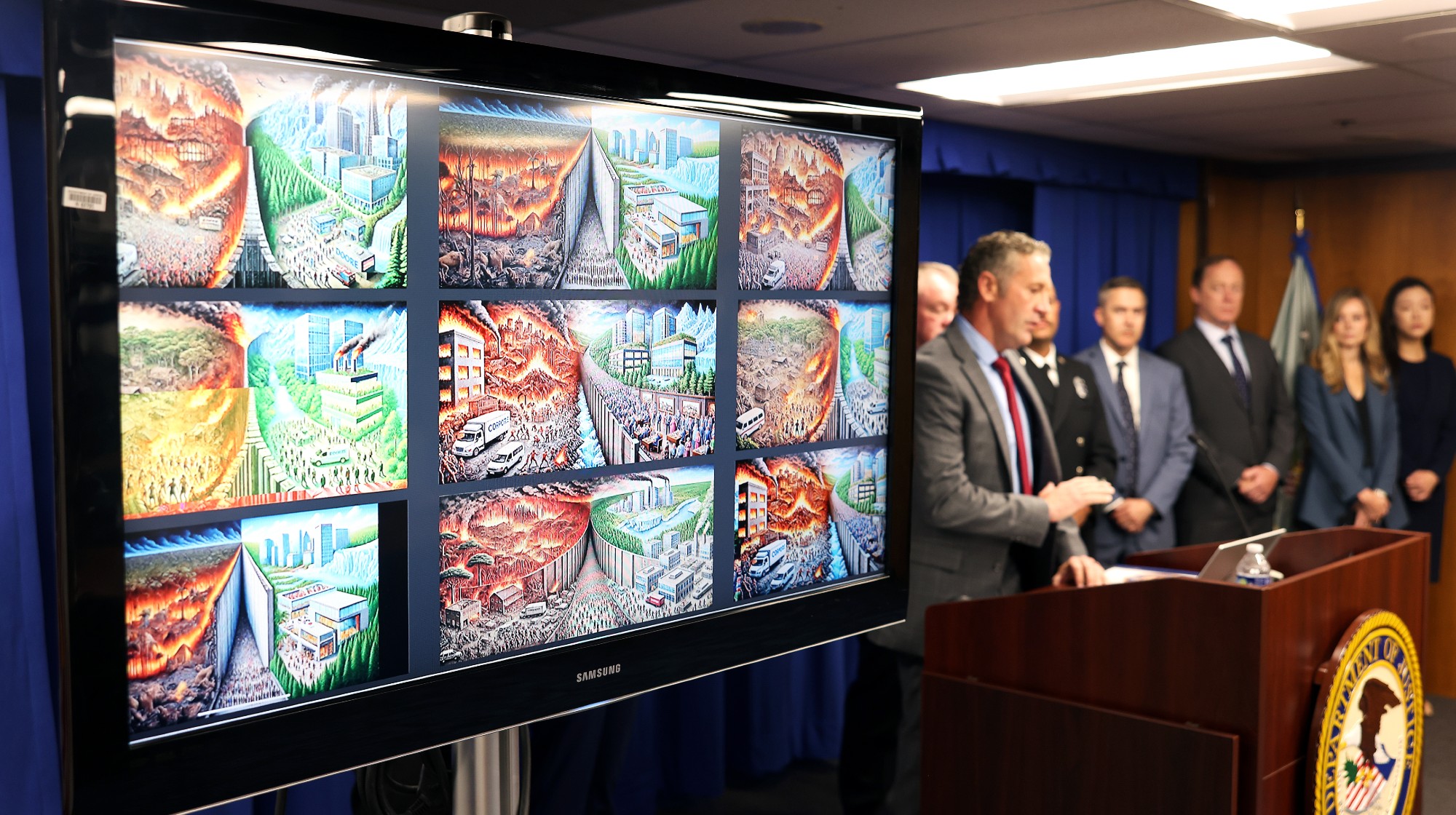Archaeologists discover secret treasure room containing 2,400-year-old gold and drugs


It's a question that has bedeviled moguls for millennia: Where do you put your solid gold bucket brimming with weed and coke? If you were a nomadic warlord from the 4th century B.C., you'd hide it in your secret treasure room, of course.
Archaeologists have found just such a room, containing two such objects, hidden beneath an ancient burial mound in southern Russia. The researchers dated the treasure horde to 2,400 years ago and believe it once belonged to the Scythians, a ferocious group of nomads who were contemporaries of the ancient Greeks. All in all, the room contains nearly seven pounds worth of gold artifacts like cups, rings, bracelets, and chokers. Those buckets, though, stole the show.
National Geographic reports:
The Week
Escape your echo chamber. Get the facts behind the news, plus analysis from multiple perspectives.

Sign up for The Week's Free Newsletters
From our morning news briefing to a weekly Good News Newsletter, get the best of The Week delivered directly to your inbox.
From our morning news briefing to a weekly Good News Newsletter, get the best of The Week delivered directly to your inbox.
[Head archaeologist] Belinski asked criminologists in nearby Stavropol to analyze a black residue inside the vessels. The results came back positive for opium and cannabis, confirming a practice first reported by Herodotus. The Greek historian claimed that the Scythians used a plant to produce smoke "that no Grecian vapour-bath can surpass … transported by the vapor, [they] shout aloud."Because the sticky residue was found on the inside of the vessels, Belinski and Gass think they were used to brew and drink a strong opium concoction, while cannabis was burning nearby. "That both drugs were being used simultaneously is beyond doubt," Gass says. [National Geographic]
You can read more about this heady, "once-in-a-century discovery" at National Geographic.
A free daily email with the biggest news stories of the day – and the best features from TheWeek.com
Nico Lauricella was editor-in-chief at TheWeek.com. He was formerly the site's deputy editor and an editor at The Huffington Post.
-
 The rise of runcations
The rise of runcationsThe Week Recommends Lace up your running shoes and hit the trails on your next holiday
-
 Amorim follows Maresca out of Premier League after ‘awful’ season
Amorim follows Maresca out of Premier League after ‘awful’ seasonIn the Spotlight Manchester United head coach sacked after dismal results and outburst against leadership, echoing comments by Chelsea boss when he quit last week
-
 January’s books feature a revisioned classic, a homeschooler's memoir and a provocative thriller dramedy
January’s books feature a revisioned classic, a homeschooler's memoir and a provocative thriller dramedyThe Week Recommends This month’s new releases include ‘Call Me Ishmaelle’ by Xiaolu Guo, ‘Homeschooled: A Memoir’ by Stefan Merrill Block, ‘Anatomy of an Alibi’ by Ashley Elston and ‘Half His Age’ by Jennette McCurdy
-
 Sole suspect in Brown, MIT shootings found dead
Sole suspect in Brown, MIT shootings found deadSpeed Read The mass shooting suspect, a former Brown grad student, died of self-inflicted gunshot wounds
-
 France makes first arrests in Louvre jewels heist
France makes first arrests in Louvre jewels heistSpeed Read Two suspects were arrested in connection with the daytime theft of royal jewels from the museum
-
 Trump pardons crypto titan who enriched family
Trump pardons crypto titan who enriched familySpeed Read Binance founder Changpeng Zhao pleaded guilty in 2023 to enabling money laundering while CEO of the cryptocurrency exchange
-
 Thieves nab French crown jewels from Louvre
Thieves nab French crown jewels from LouvreSpeed Read A gang of thieves stole 19th century royal jewels from the Paris museum’s Galerie d’Apollon
-
 Arsonist who attacked Shapiro gets 25-50 years
Arsonist who attacked Shapiro gets 25-50 yearsSpeed Read Cody Balmer broke into the Pennsylvania governor’s mansion and tried to burn it down
-
 Man charged over LA’s deadly Palisades Fire
Man charged over LA’s deadly Palisades Firespeed read 29-year-old Jonathan Rinderknecht has been arrested in connection with the fire that killed 12 people
-
 4 dead in shooting, arson attack in Michigan church
4 dead in shooting, arson attack in Michigan churchSpeed Read A gunman drove a pickup truck into a Mormon church where he shot at congregants and then set the building on fire
-
 2 kids killed in shooting at Catholic school mass
2 kids killed in shooting at Catholic school massSpeed Read 17 others were wounded during a morning mass at the Annunciation Catholic School in Minneapolis
